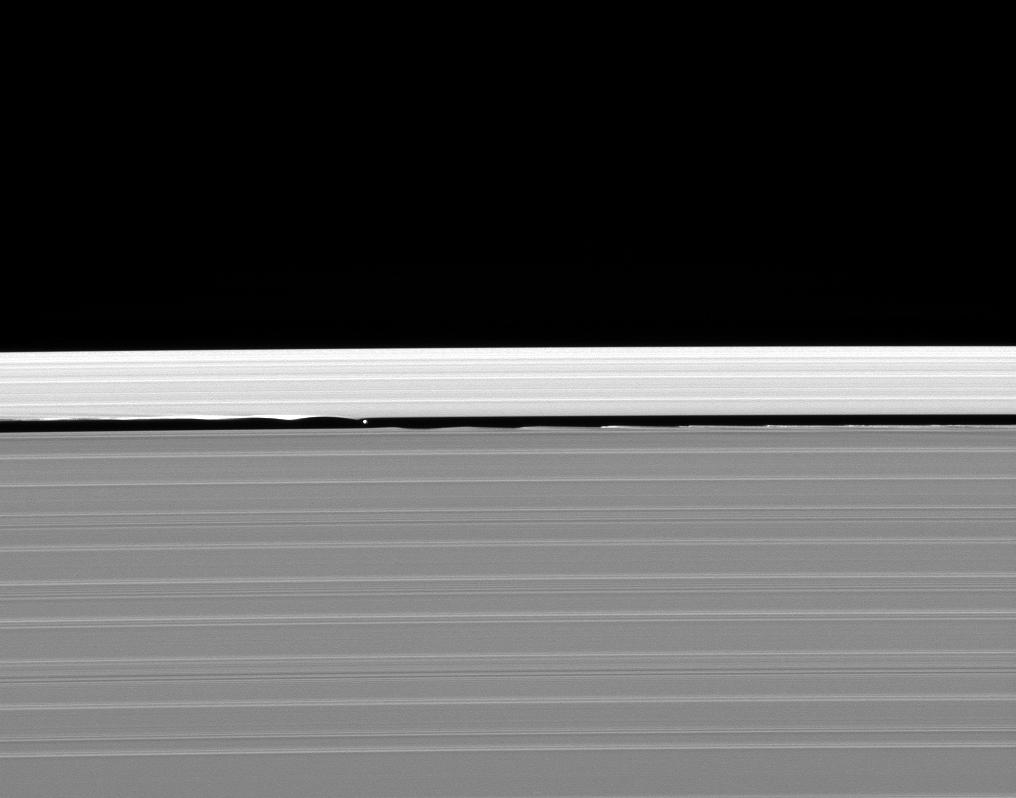Among the Waves

| PIA Number | PIA09850 |
|---|---|
| Language |
|
Daphnis and its entourage of edge waves are captured here by the Cassini spacecraft.
The wave pattern caused by Daphnis in the edges of the Keeler Gap can be likened to a standing ripple in a flowing stream -- the ripple, perhaps caused by a submerged stone, persists even though water particles are moving through it and onward downstream. Often, just downstream of the initial ripple, there are subsequent smaller waves as the water particles bob up and down before settling once more into smooth flow downstream.
Relating this analogy to the Keeler Gap edge waves, Daphnis is the stone causing the ripple -- delivering an initial gravitational kick to particles as they slowly pass by.
This view looks toward the sunlit side of the rings from about 45 degrees below the ringplane. Daphnis is 7 kilometers (4.3 miles) across.
The image was taken in visible blue light with the Cassini spacecraft narrow-angle camera on Jan. 28, 2008. The view was acquired at a distance of approximately 370,000 kilometers (230,000 miles) from Daphnis and at a Sun-Daphnis-spacecraft, or phase, angle of 95 degrees. Image scale is 2 kilometers (1 mile) per pixel.
The Cassini-Huygens mission is a cooperative project of NASA, the European Space Agency and the Italian Space Agency. The Jet Propulsion Laboratory, a division of the California Institute of Technology in Pasadena, manages the mission for NASA's Science Mission Directorate, Washington, D.C. The Cassini orbiter and its two onboard cameras were designed, developed and assembled at JPL. The imaging operations center is based at the Space Science Institute in Boulder, Colo.
For more information about the Cassini-Huygens mission visit http://saturn.jpl.nasa.gov . The Cassini imaging team homepage is at http://ciclops.org .
Credit: NASA/JPL/Space Science Institute
